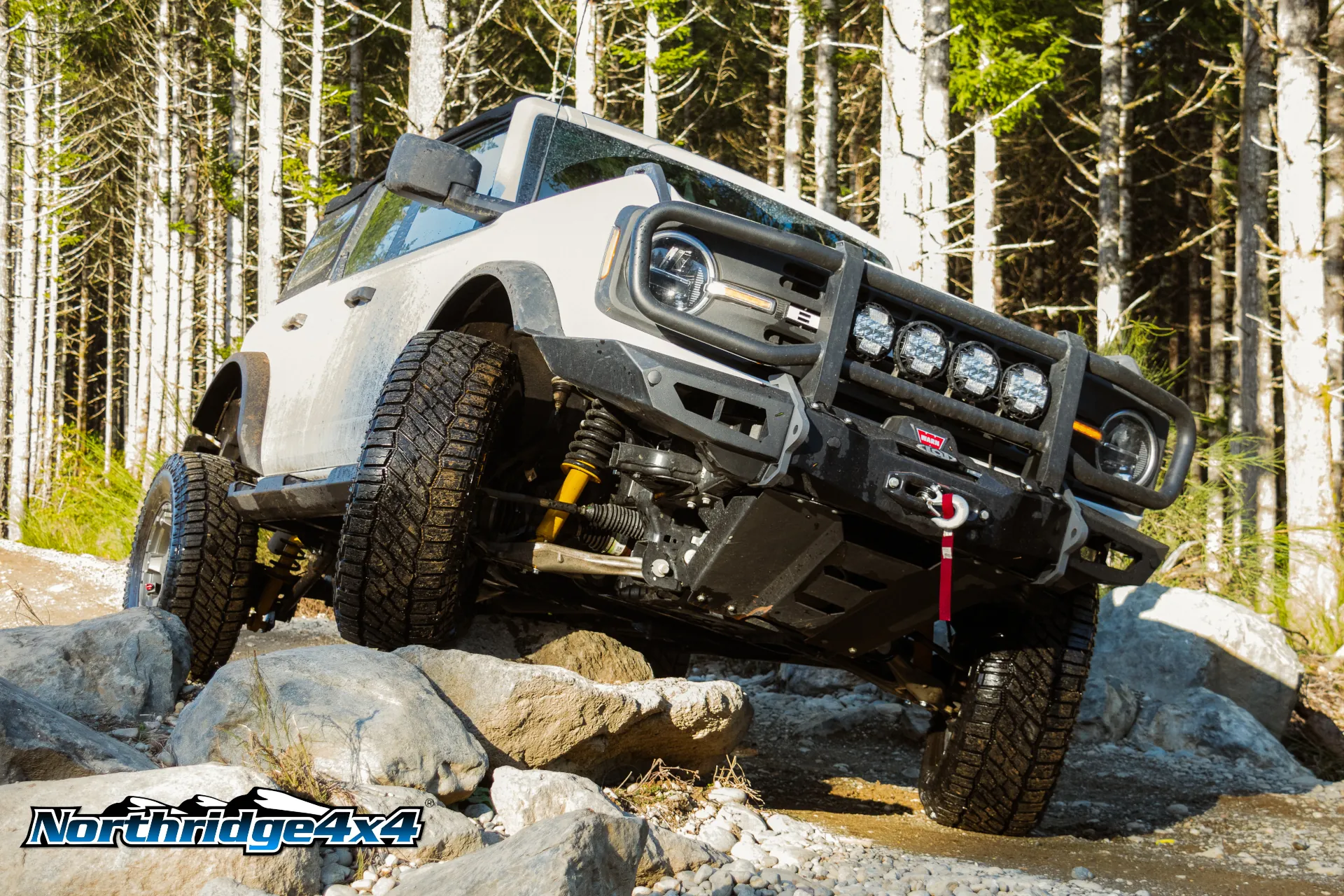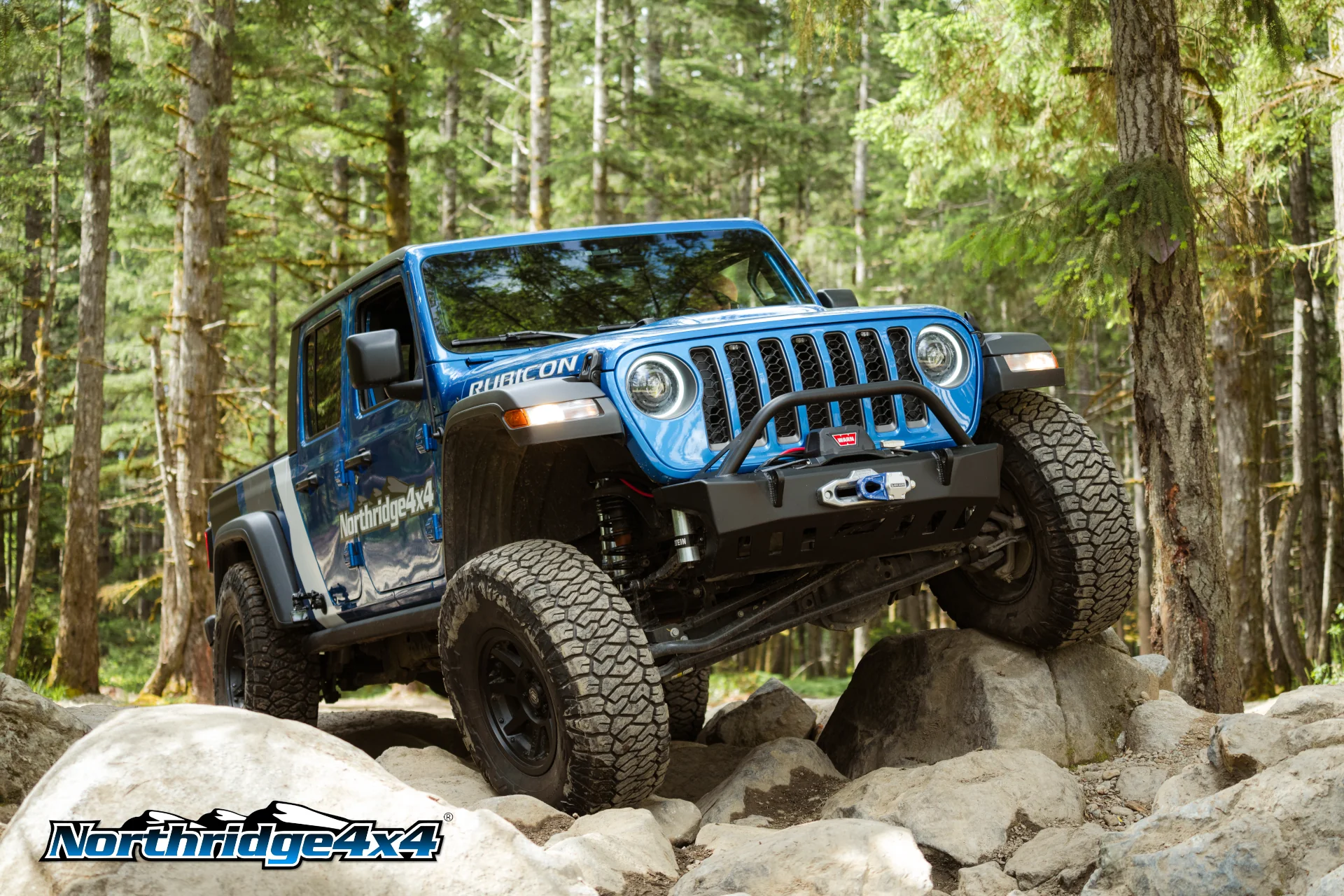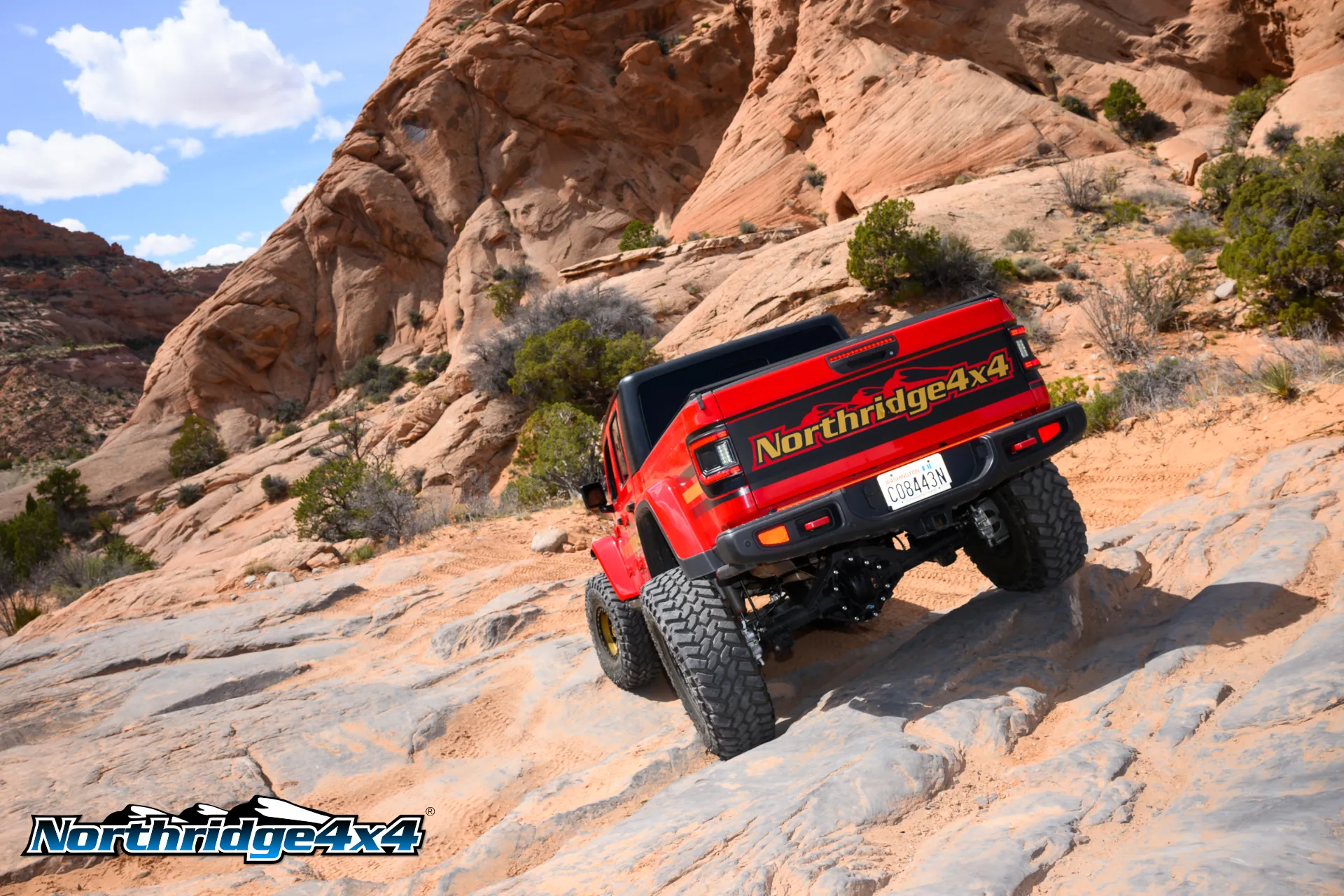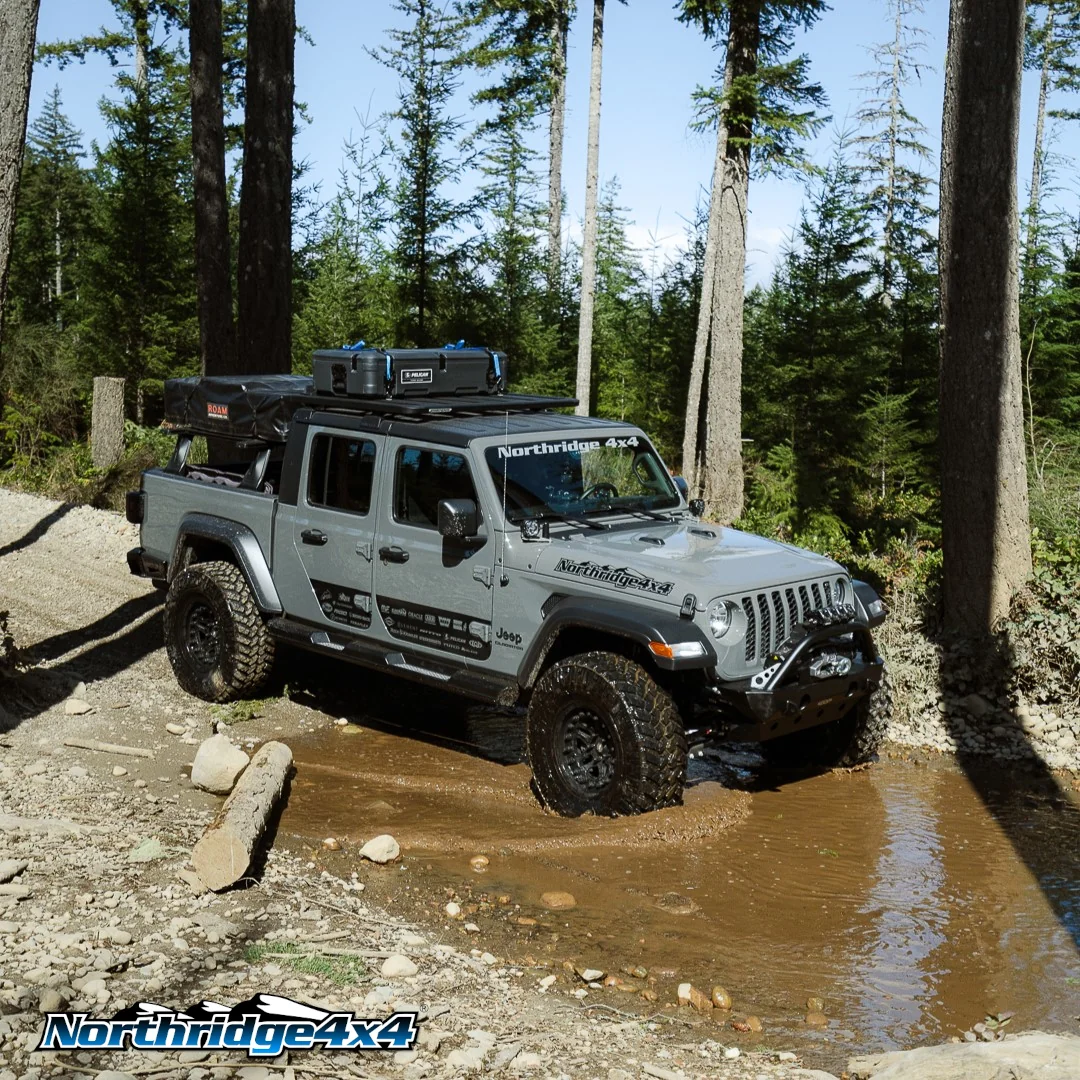- Auxiliary Lights
- Light Bars
- Fog/driving Lights
- Underhood/rock Lights
- 3rd Brake Light Solutions
- Back Up Lights
- Other Auxiliary Lighting
- Shop All
Stock
Category
Brand
Rating
Price
Stock
Category
Brand
Rating
Price
We couldn't find any results
- Use different keywords
- Double check your spelling
- Start with something less specific - you can refine your search results later
- Try changing some of your filters below:
Search term:

How to Plan Out The Perfect Jeep Or 4x4 Build
Building out your Jeep or 4x4 is an incredibly fun and rewarding experience, however it can be tough to decide what you need, especially if you dont have a plan! While there is no right or wrong way to build your Jeep, there are still several good practices to follow to ensure the end result of your build is perfectly suited for your needs and goals.
Whether your plan is to overland, rock crawl or just cruise down forest service roads, its important to build your rig accordingly. The goal of this guide is to provide general guidance for the progression of your modifications and what you'll actually need to go out and have a great adventure off-road (Spoiler: You don't need much to go out and have a great adventure!)
1. Safety & Recovery Gear

Before you head out off-road having at least some safety and recovery gear is an absolute must! Your new Jeep or 4x4 build should always start here, whether your a first time off-roader a seasoned rock crawler. Below is a list of the basic safety and recovery gear that you need for off-road adventures.
First Aid Kit: A first aid kit can be invaluable when exploring remote areas. While not required, taking a first aid course is a useful skill when far from civilization. Safety should always be the top priority on any off-road adventure, a first aid kit should be in every off-roaders kit!
Fire extinguisher: Off-roading and camping involve inherent fire hazards, including uncontrolled campfires, vehicle fires, and even brush fires ignited by hot exhaust components. Its also a great idea to hard mount your fire extinguisher in an easy to access spot inside your rig in case of an emergency.
Recovery Rope / Tow Strap: Trails can be unpredictable, even if you're only planning to be on a 1/10 rated trail its best to be prepared for the unexpected. A recovery rope is a great piece of equipment to have for almost any recovery situation. Be sure you and your friends vehicles have recovery points to attach the recovery rope to before heading out off-road. Pair a recovery rope with a soft or hard shackle for easy attachment to your Jeeps recovery hooks.
Tire Deflator: Few upgrades enhance capability and comfort as much as airing down your tires. Aired down tires provide a huge boost in traction and a softer cushion between your rig and the trail obstacles. While you can technically air down without special equipment, we offer easy-to-use tire deflators with digital gauges, as well as automatic deflators that self-adjust to a preset pressure.
Air Compressor: After letting air out of your tires for the trail be sure you have a way to air back up before hitting the road! We offer both portable air compressors and on-board air systems to make airing back up fast and easy.
Winch: A winch is an extremely valuable addition for self-recovery and helping others. To mount one, you'll need a winch plate or a front bumper with an integrated winch mount. Choose a winch rated for at least 1.5 times the weight of your Jeep or 4x4. Pair your winch with a tree strap to ensure you can safely use trees as a recovery point. It's always better to have it and not need it than to need it and not have it!
Jack: Whether you're relying on your vehicle's factory jack or upgrading to an off-road jack, always ensure it's in proper working condition! Flat tires can happen anytime on the trail, so make sure you have all the necessary tools to swap one out. If your Jeep or 4x4 is lifted and running larger tires, double-check that your OEM jack has enough height to get your vehicle off the ground for a tire change.
Spare Tire: The rugged terrain you'll encounter off-road leaves you at greater risk of getting a flat tire. A spare tire ensures you can safely get off the trail and back to civilization in the event of a tire puncture. A tire repair kit is also helpful for repairable tire punctures.
2. Off-road it!

My recommendation for the second step to plan out your Jeep or 4x4 build is take it off-road and use it. Nothing beats real-world experience to help you determine how you'll want to equip your 4x4 for your outdoor adventures. Start with easy trails to see what your rig is capable of before attempting harder trails. Most 4x4s in stock configuration are fully capable of tackling a good amount of trails out there, so don't be afraid to off-road without a lift and big tires!
Spending time behind the wheel of your Jeep or 4x4 off and on-road helps you figure out what you truly want from your rig. After seeing what your Jeep or 4x4 is capable of or lacking in, you'll have a better idea of what modifications and upgrades you need! The best way to decide how to build your rig is to get out and use it!
If it's your first time off-roading, it's best to go with someone experienced and never hit the trails alone. Off-road parks are a great place to get familiar with your vehicle's capability while staying close to civilization.
3. Armor

After spending some time off-road in your stock Jeep or 4x4, it’s time to consider what armor you need. Damaging the underbody drivetrain components can leave you stranded on the trail and many 4x4's are vulnerable to exterior damage on the trail. Thus armor becomes an important upgrade for ensuring your Jeep or 4x4 can make it through tougher trails without sustaining damage.
Skid Plates: While many 4x4s come stock with skid plates, they usually dont provide complete drivetrain protection. Unless you plan on sticking to more mild trails, additional skid plates ensure your underbody doesnt get banged up and leave you with a costly repair bill!
Rocksliders: Whether you're rock crawling or overlanding, rock sliders offer essential protection for your Jeep’s sides. Available in various shapes and sizes, there’s an option for every type of off-roader. Whether you need a step for easier access to your lifted rig or maximum strength for rugged trails, we’ve got you covered.
Differential Covers: Adding heavy-duty differential covers is a great upgrade over the thin, OEM covers. While off-road, the OEM differential covers are prone to cracking and bending which can lead to a loss of fluid that could leave you stranded. You don't need to be a hardcore rock crawler to benefit from heavy-duty differential covers!
Front & Rear Bumpers: Your 4x4 likely came with plastic front and rear bumpers that aren’t built for tough trails. Upgrading to steel or aluminum bumpers adds durability and protection for off-road adventures. Many front bumpers also include built-in winch mounting plates for added functionality.
4. Tires and Suspension

If your goal is to conquer tougher terrain or just have an easier time exploring back country trails, an upgraded set of tires and a suspension lift is a great next upgrade. Even if you dont plan on going up to a larger set of tires, its still worth upgrading to a tire with a more aggressive tread, especially if your rig came from the factory with street tires. Depending on how large of a tire you go to, you may need a suspension lift and aftermarket wheels with a lower backspace to fit larger tires.
All-Terrain Tires: These tires live up to their name, delivering solid performance across various terrains. All-Terrain tires strike a balance between road comfort and off-road capability. Many are 3-Peak Mountain Snowflake rated, meaning they meet the standards for severe snow conditions. All-Terrains are a good option for those who want a comfortable and quiet daily drive, but still want good off-road performance.
Mud-Terrain Tires: With a more aggressive tread than All-Terrain tires, Mud-Terrains are purpose-built for off-road trails. As the name suggests, they offer superior traction in mud, making them ideal for wet and muddy conditions. They are also typically built stronger than All-Terrains, reducing the risk of damage on sharp, rocky terrain. If off-road performance is your priority, Mud-Terrains are a solid choice.
Suspension: Lift height should be determined by how large of tires you choose to go to. If you're sticking to overlanding or mild trails with stock or slightly larger tires, a leveling kit or small lift should be sufficient. For 35" tires or larger, a 2.5" lift or higher is a solid choice, although proper fitment is dependent on your vehicle. Generally, once you exceed 3.5" of lift, the cost and number of required components to do the lift properly increases.
Non-Beadlock Wheels: Upgrading to aftermarket wheels isn't always necessary, especially if you're sticking with the factory tire size or only going slightly larger. However, aftermarket wheels are a great upgrade when fitting larger tires, thanks to their optimized backspacing and offset. Lower backspacing or negative offset pushes the wheels and tires further out from the vehicle's fender well, providing improved clearance and a more aggressive stance. And honestly, many aftermarket wheels just look better than the OEM wheels!
Beadlock Wheels: Airing down your tires for extreme off-road conditions like rock crawling increases traction but also raises the risk of the tire debeading from the wheel. Beadlock wheels solve this by using a locking ring to secure the tire's bead to the wheel, preventing it from coming loose. This makes beadlock wheels ideal for those seeking maximum off-road performance on tough, technical trails!
5. Drivetrain Upgrades

It's important not to overlook drivetrain upgrades when building your Jeep or 4x4. Lifting and adding larger tires increase stress on the drivetrain, which will eventually need to be addressed. Even if you plan to keep stock-sized tires and a mild lift, certain drivetrain upgrades are still worthwhile.
Driveshafts: This upgrade is especially beneficial for those with more than 2.5" of lift on their Jeep or 4x4. As lift height increases, driveshaft angles become more severe, leading to premature wear, vibrations, or even failure. Aftermarket options provide greater durability and correct steep operating angles, often using a double cardan design.
Brake Upgrades: Upgrading to larger wheels and tires or hauling heavy overlanding gear can put extra strain on your brakes. Upgrading your braking system ensures your Jeep or 4x4 has the stopping power needed to stay safe both on and off the trail.
Regear: Heavy tires and overlanding gear can make your Jeep or 4x4 feel sluggish. Upgrading to lower gears (numerically higher) helps restore power and performance to handle the added weight. Checkout our Regear Blog post to learn more about regearing!
Differential Lockers: Upgrading your front and/or rear axle with a locker significantly boosts off-road capability. A differential locker "locks" an axle together, ensuring equal torque is sent to both wheels for maximum traction. Selectable air or electric lockers offer the flexibility to engage or disengage the locker as needed with the switch of a button. While not necessary to off-road, Lockers truly take off-road capability to the next level and can help you get through tough trails much easier.
6. Overland Upgrades

While its lower on the list, overland upgrades can be added to your build much sooner based on your preferences and goal for your build. Overlanding upgrades are great for adding comfort and convenience for both long expeditions and weekend camping trips! Below is a list of essential overland upgrades to make all of your adventures even better.
Water Containers: Water is essential when exploring the wilderness, so it's crucial to stay hydrated throughout your trip. Carrying extra water containers or tanks ensures you have plenty of water for drinking, cooking, and cleaning on all your outdoor adventures.
Roof-Top Tent: When people think of overlanding, the roof-top tent often comes to mind first—and for good reason. It’s a significant upgrade for outdoor adventures, offering quick setup and excellent protection from the elements. Whether you're on a long outdoor adventure or a weekend trip, a roof top tent provides an elevated camping experience(pun intended).
Roof Rack: Whether you're mounting a roof top tent or need additional gear storage, a roof rack is a great overlanding upgrade! Whether you add a roof or a truck bed rack, you'll be adding more exterior functionality to your Jeep or 4x4.
Ground Tent: For a simple and affordable shelter option for camping or overlanding, ground tents are a great choice! They’re lightweight, compact, and easy to pack, making them perfect for those who value simplicity or aren't ready to invest in a roof-top tent just yet.
Powered Fridge: If you're planning to overland for multiple nights or just want to ditch an ice chest, a powered Fridge is the solution. A powered fridge allows you to bring fresh food and cold drinks without having to worry about melting ice.
Storage Containers: Whether you're planning a week long adventure or weekend camping trip, you'll need sturdy containers for all of your gear. Whether you mount storage containers to your roof rack or secure them in your cargo area, we offer durable containers for all of your off-road and camping gear!
Lighting / Cosmetic Upgrades

While it may seem obvious, but purely cosmetic upgrades generally should be low on your the list of priority for upgrades when building your Jeep or 4x4 if your priority is utility and function. Lighting on the other hand can add much needed visibility, especially if your Jeep is equipped with halogen headlights, these are very dim from the factory and greatly benefit from an LED upgrade.
LED Headlights: Ensuring your headlights provide plenty of visibility both on and off-road is essential for safety. If your Jeep or 4x4 is equipped with dim halogen lights, you may be left in the dark if you're exploring off-road at night or driving down a dimly lit rural highway. LED Headlights are probably the best lighting upgrade to start with.
Fog/Driving Lights: Whether you're upgrading your stock fog lights or adding auxiliary driving lights, improved visibility in low-light conditions is crucial for both on and off-road driving. Dust, fog, rain, and snow can all reduce visibility, and fog and driving lights offer extra illumination to help you see clearly through these challenges.
Light Bars: If your goal is to flood the trail with an immense amount of light, light bars are the perfect solution. Typically mounted to the top of the windshield with brackets, this positioning helps direct light higher, providing maximum illumination down the trail.
Vinyl Decals: If you're looking to add a finishing touch or some visual flare to your build, vinyl decals are a great way to personalize and set your build apart from the rest.
Grilles & Badges: Upgrading your front grille with inserts, lighting or replacements can enhance your front ends style. Badges are excellent for adding additional detail and style to your Jeep or 4x4 build!
While a Jeep or 4x4 is never truly "finished," I hope this guide helps you create a solid plan for your perfect build! It's easy to get caught up in upgrades and gear, but don't lose sight of why you're building your rig — to hit the trail and enjoy the outdoors with family and friends!
We'll see you out on the trail!


